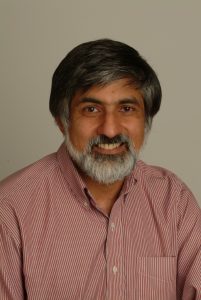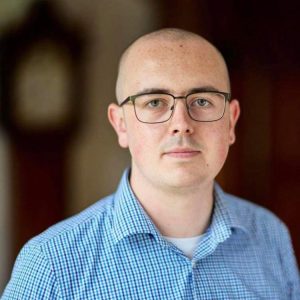BioMaths Colloquium Series – 2023/24
1 May 2024 – 1pm
Join us at 12:45 for coffee tea and biscuits
Research Crucible (room 109, Computational Foundry, Bay Campus) or Zoom (register here)
Prof Philip Maini FRS FMedSci FRSB
with Samuel Johnson
(Wolfson Centre for Mathematical Biology, University of Oxford)
The effect of boundary conditions on collective cell movement and invasion
Abstract:
Collective movement is ubiquitous in nature, from the flocking of birds to collective motion in bacterial colonies. In cell populations, collective migration is an integral part of development, repair, and plays a major role in a range of diseases such as metastasis in cancer. Despite decades of research, the biological mechanisms underpinning collective cell migration remain unclear in many systems. We take as a model system, the cranial neural crest, in which streams of cells migrating as a collective are confined laterally to maintain spatial separation from adjacent streams. In prior mathematical models, this mechanism of lateral confinement has been represented by the imposition of zero-flux boundary conditions adjacent to migrating collectives, though no corresponding physical barrier exists to confine collectives in vivo. Here, we briefly review previous work based on a multiscale hybrid mathematical model for collective migration in the cranial neural crest in which chemical signal dynamics are governed by a partial differential equation and cells are modelled using a stochastic agent-based model. Then, by modelling the effects of two proteins expressed adjacent to cranial neural crest cell streams, we show that while separately, they are unable to successfully confine streams, when expressed together, they effectively provide a mechanism to experimentally justify the zero-flux boundary conditions considered in prior works.
Bios

Philip K. Maini received his B.A. in mathematics from Balliol College, Oxford, in 1982 and his DPhil in 1985 under the supervision of Prof J.D. Murray, FRS. In 1988 he was appointed Assistant Professor in the Mathematics Department at the University of Utah, Salt Lake City. In 1990 he returned to Oxford as a University Lecturer and in 2005 was appointed Statutory Professor of Mathematical Biology. His present research interests focus on collective cell behaviour, with applications ranging from pattern formation in embryonic development to devising treatment strategies for cancer.
Philip is a Fellow of the IMA (FIMA), a SIAM Fellow, an Inaugural SMB Fellow, a Fellow of the Royal Society of Biology (FRSB), Miembro Correspondiente (Foreign Fellow), La Academia Mexicana de Ciencias (AMC), Fellow of the Royal Society (FRS), Fellow of the Academy of Medical Sciences (FMedSci), Foreign Fellow of the Indian National Science Academy (FNA), Fellow of the European Academy of Sciences (FEurASc) and Fellow of the American Association for the Advancement of Science (FAAAS).
 Samuel Johnson is a 3rd year DPhil student at the Wolfson Centre for Mathematical Biology under the supervision of Professor Philip Maini and Professor Ruth Baker. His DPhil project concerns mathematical and computational models of collective cell migration in the cranial neural crest. Prior to his DPhil, Sam studied for a MASt in Applied Mathematics at the University of Cambridge and a BSc in Theoretical Physics at the University of Edinburgh.
Samuel Johnson is a 3rd year DPhil student at the Wolfson Centre for Mathematical Biology under the supervision of Professor Philip Maini and Professor Ruth Baker. His DPhil project concerns mathematical and computational models of collective cell migration in the cranial neural crest. Prior to his DPhil, Sam studied for a MASt in Applied Mathematics at the University of Cambridge and a BSc in Theoretical Physics at the University of Edinburgh.
